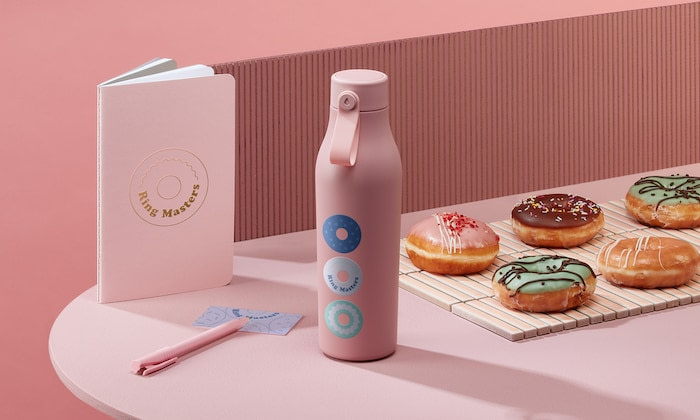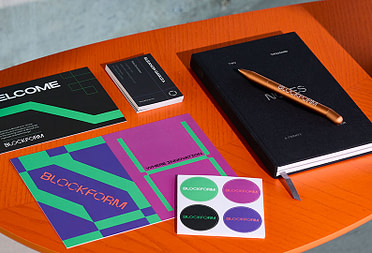Planting the seeds for growth with brand equity

Here’s a quick pop quiz for you: What do Starbucks, Coca-Cola and Tylenol all have in common? Have your guess ready?
If you’re trying to figure out what a pain relief product has in common with caffeinated beverages, we’ll spare you the headache. The answer is that all three brands rank as having some of the highest brand equity in the U.S. — both within their respective sectors and across all industries. Although brand equity does not directly translate into fiscal equity, as we’re about to find out, there’s some major correlation.
So, what’s in a brand name? Well, when it comes to the value of your company, everything.
What does it mean to have high brand equity?
Before we dive into your company’s own brand equity and everything you can do to further grow it, it’s important to make a few key distinctions.
A brand is an intangible business concept that helps customers to identify your company and your products. Your brand is not just your logo, slogans or any other marketing tools you use to stand out in your market. Think of it instead as everything you represent as a company.
Brand equity can be a bit of a subjective idea, but to keep things simple we’ll boil it down to one sentence: It’s the perceived worth of your brand when compared to an alternative option. However, your brand and marketing tactics both feed into your ultimate brand equity.
At its most basic, we can break brand equity down to three major components:
- Consumer perception: This is represented by both a customer‘s personal experiences with your brand as well as the things they learn from their peers, the media and your own marketing.
- Positive effects: These moments can influence your brand in two ways, coming in the form of tangible value or a more intangible win such as awareness and reputation. When a strategic move pays off, it will have a positive impact on your brand equity.
- Negative effects: For everything we said about positive effects, the opposite is true here. For example, if your company had a major recall, both your revenue and trustworthiness will likely go down.
Over time, these factors result in either a high or low total brand equity. If your organisation falls into the first camp, you’ll be able to leverage the value of your brand to more easily grow your company. However, if a customer is willing to purchase a substitute based on their perception of your brand, you may have negative brand equity — and some legwork ahead of you.
Brand equity isn’t something that’s developed overnight. The accumulation of your company’s entire history from your earliest products to your media presence today all feed into the average consumer’s perception of your company.
As an example, for Coca-Cola, the brand’s equity spans all the way back to 1892. This includes hiccups along the way such as the now infamous “New Coke” incident that the company refers to as “one of the most memorable marketing blunders ever.” After introducing a new formula for its classic flavour, the company received enough backlash that they had to quickly change back to the original ingredient combination.
However, just like Coca-Cola witnessed, when your brand equity is high, you’ll be more likely to withstand those negative effects and rebuild trust with your consumers. It will just take a bit of time to get there.
What are the benefits of positive brand equity?
While the exact definition of brand equity can be up for interpretation, its impact on your organisation and your long-term success are not. Like we saw with Coca-Cola, having a high brand equity will provide your company with a bit of a safety net. A single miscalculation won’t send your customers packing.
In addition to stability, there are several other long-term benefits you can begin to realise as you start building your equity:
1) Long-term customer loyalty
As your brand equity grows, so too will customer loyalty. Consumers who truly believe in the value of your brand and your products are far less likely to consider an alternative offering, as they’ve begun to perceive yours as the best on the market. In addition to the fact that loyal customers are more likely to buy from a brand they trust, they are also more likely to advocate for your company. In fact, 77% of customers would recommend a brand to a friend after a single positive experience according to Forbes.
As you continue to develop your brand’s positioning and maintain high equity, loyal customers will prove essential in growing awareness and expanding your audience.
2) Brand recognition
When it comes to brand equity, recognition and awareness all go hand in hand. For some of the most recognisable (and valuable) companies out there, the secret to achieving all three stems from having a consistent brand identity. As both potential and existing customers are exposed to your logo, colours and taglines, they’ll become more familiar with your brand. However, if these vary across your marketing assets, it’ll be difficult to grow.
While not every company is reaching for worldwide growth, the goal of creating a strong and consistent brand image should always be a priority. That way, whether a would-be customer sees an ad online or hears your slogan, they’ll immediately recognise your branding and think of the positive traits you embody.
3) Opportunities for new growth
Once you’ve proven your brand’s value in one category, the world is truly your oyster. Customers (and soon-to-be clients) who recognise your brand will be interested in trying more products as you continue to expand your offerings. Just make sure all of your new ventures align with that positive brand image you’ve worked so hard to cultivate.
By leveraging the value of your brand, you can more easily add new products to your line and people will be more willing to try those new offerings. You can expand into new markets and geographies.
It’s important to keep in mind that you won’t be able to reach this point right out of the gate. Instead, it will take years of establishing goodwill within your industry as well as a combination of strategic brand management and a high-quality customer experience.
OK, you understand the importance of brand equity and the impact it can have on your organisation’s long-term success. Now, it’s time to determine where your brand stands and map out your next steps.
Measuring your brand value
Due to the somewhat subjective nature of brand equity, it can feel difficult to put an exact number on the value of your branding. Every customer will perceive your company in their own way — just think, there’s a reason Pepsi continues to thrive in the face of Coca-Cola.
While consumer preferences can vary, there are several metrics you can use to get a better understanding of your brand equity:
Financial metrics
Depending on your company’s long-term goals for growth, you may have slightly different KPIs compared to another organisation in a different industry. However, there are some important financial metrics every brand can agree on when it comes to equity:
- Market share: What percentage of overall sales in your product category do you generate?
- Customer acquisition cost: How much does your company invest in marketing to convert a new customer? The higher your brand equity is, the lower your acquisition cost should be. You may also want to consider comparing your numbers to others in your industry as a benchmarking tool.
- Lifetime value: How much value does a customer generate throughout their relationship with your brand?
- Revenue trends: Historically has your company seen growth year-after-year?
Although these metrics might not tell the whole story on their own, put together they’ll be a major clue in assessing the total value of your brand.
Net Promoter Score (NPS)
The traditional NPS survey pairs together the objectivity of data with the subjectivity of consumers’ preferences by asking a single question: On a scale of 1 to 10, how likely are you to recommend our brand?
Using this scale, customers are segmented into three groups:
- Detractors (1-6) who have had a negative experience with your brand.
- Passives (7-8) are satisfied with your brand but would not be likely to recommend it.
- Promoters (9-10) are your most loyal customers and biggest brand advocates.
By subtracting the percentage of your customer base that identifies as detractors from those who have fallen into the promoter category, you’re left with your final score. However, remember that each industry has its own average NPS ranking. Knowing your’s compared to the average your market research uncovers will be key to using NPS as a benchmark of your equity and overall customer sentiment.
Brand awareness
If you haven’t already, define your target market. Which group of customers should your brand resonate with the most? What are some of their key traits, values, opinions and attitudes? Once you’ve characterised your ideal customer, you can launch a survey within a population representative of that group. If you want to go a level deeper than recognition and recall, you can also use this survey to capture sentiment and broader market insights.
No matter which metrics you choose to track, be sure to check in on them over time so that you can measure your changes in your brand strength.
Building brand equity: Where to start
Now that you know where your brand stands through a combination of objective and subjective data, it’s time to lay the groundwork for stronger, long-lasting equity. Although you can experiment with several different strategies, we recommend focusing on specific goals for growth:
Build greater awareness
If potential customers aren’t aware your company even exists, leveraging your brand and its value will be impossible. As we mentioned earlier, consistency is a key component to achieving widespread awareness. However, there are several other tools you can use to expand your brand‘s reach:
- Start a referral program: Word-of-mouth marketing can be one of your best friends as a brand. Offer existing customers rewards or discounts for referring their peers.
- Brand partnerships: A co-marketing campaign can be a great way to pair yourself with a similarly positioned brand while also tapping into an entirely new audience.
- Run segmented ads: Once you’ve identified your target market, develop ads that specifically speak to their unique needs in order to align your brand with their current context.
Communicate your brand positioning
Your brand can talk the talk, but can it walk the walk? Once you’ve clearly defined your values and goals as an organisation, reinforce and demonstrate those concepts by:
- Participating in philanthropic events that align with your brand promise and mission statement.
- Developing helpful and relevant content that can be used by peers as well as customers.
- Organising industry-wide seminars to reinforce your status as a thought leader.
Foster deeper customer relationships
One of the most important components of brand equity is the way your current customer base perceives you. While it’ll be important to foster awareness and recognition in potential buyers, be sure to continuously find new ways to delight your existing ones as well. Some potential tactics to this include:
- Send out surveys to ask customers what they enjoy about your brand and how you can improve.
- Develop a loyalty program that rewards repeat purchases and encourages customers to stay with your business.
- Create high-quality swag that speaks to your brand as well as your customers’ needs. Think about items that not only fill a need, but also align with your company’s values. Demonstrating how much you appreciate your customers through a well-thought out gift can be a great way to foster long-term relationships.
Although these aren’t the only tactics out there that will help you develop your brand equity, they’ll be key to building your initial foundation for growth.
Achieving strong brand equity
As you begin your journey toward higher brand equity, just remember: It takes time. Some of the most valuable companies in the world have taken a century to reach the point they’re at. The good news is that that doesn’t mean you’ll have to check back in circa 2122. Instead, stay consistent and find new ways to delight your customers at every touchpoint.
From keeping your branding consistent to developing high-quality, professional assets, the team at MOO can help. Check out our Business Services and learn more about how we can support you on your path to stronger brand equity.
Keep in touch
Get design inspiration, business tips and special offers straight to your inbox with our MOOsletter, out every two weeks.






